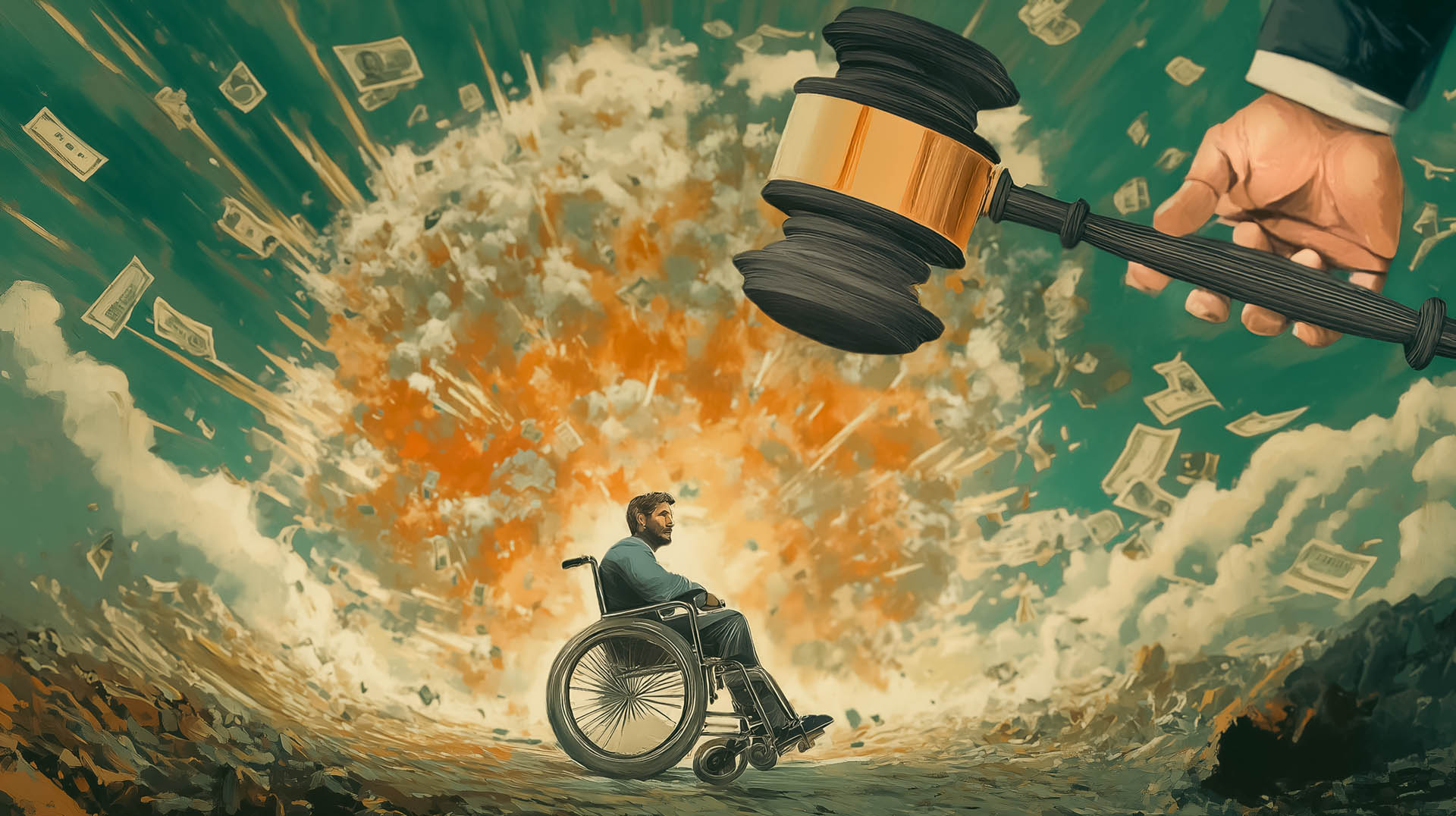Rising Verdicts, Rising Premiums

By Sabrina Martinez,
Smith Business Law Fellow
J.D. Candidate, Class of 2025
The impact of “nuclear verdicts” – those exceeding $10 million – has tripled since 2020, with the median nuclear verdict rising to $44 million, up from $21 million in 2020.1 These payouts raise serious questions about equity and financial stability.
What is fueling this trend?
A growing public demand for corporate accountability is driving judgments to rise at a much faster rate than economic inflation.2 This social inflation has led juries to award significantly larger damages in an attempt to send a “message” to corporate defendants.3 This is due in part to plaintiff attorneys employing tactics like anchoring –the practice of proposing astronomical damage amounts in an attempt to sway the jury’s verdict.4 Additionally, plaintiff attorneys employ the Reptile Theory to encourage jurors to focus on broad societal risks, and their own instinctual fears and emotions, rather than the case-specific facts. 5 Another major contributor to this growth is the rising cost of medical care. Long-term care for injured plaintiffs is becoming more costly as medical treatments become more advanced, which leads to higher compensation demands.
In response to these trends, insurers have raised premiums and reduced coverage limits. At the same time, many companies are now required to take on higher deductibles before their coverage takes effect, shifting more financial risk onto them.6 In some cases, businesses are being priced out of the insurance market altogether, forcing them to self-insure or establish captive insurance programs to manage their risks. 7
These growing insurance costs and nuclear verdicts are particularly dangerous for small businesses. Unlike larger corporations, which have the resources to absorb these escalating costs or self-insure, small businesses frequently lack the financial cushion to withstand such increases. As a result, many small businesses are forced to face the harsh reality of either paying exorbitant premiums for little coverage or not being able to afford insurance at all. These rising expenses may occasionally force small businesses to close or drastically scale back operations as they struggle to survive in a more litigious and financially taxing environment. Since small businesses are frequently the foundation of local communities and job markets, this presents a serious risk to the overall economy.
According to a study by the U.S. Chamber of Commerce Institute for Legal Reform, nearly half of nuclear verdicts between 2013 and 2022 ranged from $10 million to $20 million, while over a third fell between $20 million and $50 million. Disturbingly, 19% exceeded $50 million, with 115 cases surpassing $100 million. 8
This impact is expected to continue to change the insurance market. As the gap between declining insurance coverage and rising litigation costs widens, there is an urgent need for legal and industry-wide remedies. Many organizations are turning to Alternative Dispute Resolution (ADR) methods like mediation and arbitration as more cost-effective, efficient, and flexible alternatives to litigation. ADR’s growing acceptance may offer a workable way for companies to deal with a more litigious environment.
Beyond ADR, legislative changes have been successful in reducing the risks of nuclear verdicts. Significant tort reforms were implemented in Florida in 2023 with the goal of reducing excessive jury awards. 9 These reforms have led to a significant decrease in such verdicts within the state. Florida ranked second nationally in the number of nuclear verdicts prior to the reform. However, the state improved to seventh place after the new laws were passed.10
These reforms led to a notable decline in nuclear verdicts, improving Florida’s national ranking in this area. Prior to the reforms, Florida ranked second in the nation for nuclear verdicts, but after reform implementation, the state’s ranking improved, landing in seventh place. This demonstrates how legislative action can help balance the legal landscape and reduce the financial strain of excessive litigation.
Without urgent legal and industry-wide reforms, the growing litigation crisis will only deepen, making it harder for companies—especially small businesses—to survive.
- Insurance Business. Will Nuclear Verdicts Impact the Insurance Industry in 2025? Insurance Business, Mar. 17, 2025, https://www.insurancebusinessmag.com/us/news/breaking-news/will-nuclear-verdicts-impact-the-insurance-industry-in-2025-519537 .aspx
- Verisk. Understanding the Surge in Social Inflation. Verisk, Oct. 2024, https://core.verisk.com/Insights/Emerging-Issues/Articles/2024/October/Week-1/Understanding-the-Surge-in-Social-Inflation
- Navigating Nuclear Verdicts: General Strategies and Insights for Captive Insurers,” Captive.com (Jan. 8, 2024), https://www.captive.com/news/navigating-nuclear-verdicts-general-strategies-and-insights-for-captive-insurers
- Michael K. Callahan, Litigation Frenzy: Navigating Social Inflation and Nuclear Verdicts, 19 No. 3 In-House Def. Q. 3 (2024)
- Joseph P. Moriarty, Fighting Back Against the Rise in Nuclear Verdicts, 65 No. 1 DRI For Def. 19 (2023)
- IADC. Nuclear Jury Verdicts. International Association of Defense Counsel, https://www.iadclaw.org/assets/1/6/Nuclear_Jury_Verdicts.pdf
- Aon Plc, Captive Insurance Market Grows as More Companies Turn to Self-Insurance, Insurance Journal (Sept. 4, 2024), https://www.insurancejournal.com/news/international/2024/09/04/791321.htm
- Chamber of Commerce Inst. for Legal Reform, Nuclear Verdicts: An Update on Trends, Causes, and Solutions (May 30, 2024), https://www.thefederation.org/docs/Events/2024/CCS/CLE/11-Chamber.pdf
- Report Indicates Florida Tort Reform Reduced Nuclear Verdicts, Fla. Trend (Feb. 20, 2024), https://www.floridatrend.com/article/40012/report-indicates-florida-tort-reform-reduced-nuclear-verdicts.
- Id.




